Winter Road Prep 2025 is already underway across multiple U.S. states, as transportation agencies begin reinforcing highways for snow, ice and heavy truck traffic to ensure safer conditions for commercial drivers during the peak freight season. From avalanche prevention in mountain corridors to anti-icing pavement treatments in the Midwest, the nation is gearing up for a challenging winter.
Winter Road Prep 2025 marks the beginning of a nationwide effort to protect U.S. highways before freezing temperatures hit. Even though fall has just begun in many regions, transportation departments in states like Washington, Colorado, Utah, Minnesota, Wisconsin and New York are accelerating their Winter Road Prep 2025 plans to get ahead of early snowfalls and ensure infrastructure resilience against ice accumulation and heavy truck loads.
This early action is not just routine—it is a critical safety strategy. According to the Federal Highway Administration (FHWA), more than 1,300 people die and over 116,000 are injured every year in crashes on snowy, slushy or icy roads. For the trucking industry, winter storms can shut down key freight corridors, cause delivery delays, increase fuel consumption and heighten accident risks, amplifying both economic and human impact.
Winterizing a road
Winterizing a road is far more complex than simply waiting for snowplows to mobilize. DOTs (Departments of Transportation) conduct comprehensive infrastructure interventions weeks or months before freezing temperatures arrive. Preparation efforts typically include:
✅ Sealing cracks and repaving sections to prevent water freeze damage
✅ Cleaning and unclogging storm drains and culverts
✅ Installing or strengthening snow fences and avalanche barriers
✅ Testing and calibrating weather and pavement sensors
✅ Training snowplow operators and assigning shifts
✅ Stockpiling road salt, sand and magnesium chloride brine
✅ Verifying guardrails and improving night visibility
✅ Updating signage and chain control areas for heavy trucks
In high-elevation regions, such as Colorado’s I-70 or Washington’s Snoqualmie Pass on I-90, crews also deploy avalanche control systems, including fixed artillery locations and remote-triggered exploders to release snow in a controlled manner before it builds to dangerous levels.
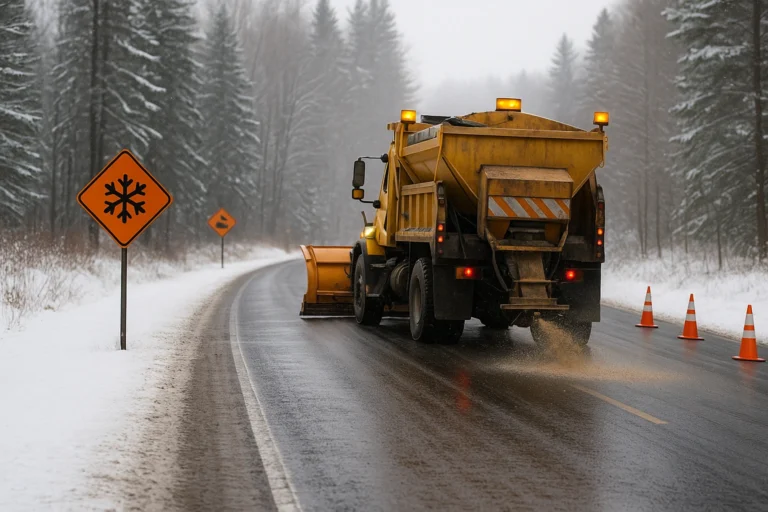
Examples from Key Winter States: Snoqualmie, Rockies and the Midwest
Washington State’s Department of Transportation (WSDOT) has already announced lane restrictions on I-90 through Snoqualmie Pass for drainage work, barrier reinforcement and anti-icing system calibration. This area is one of the most critical freight corridors in the Pacific Northwest and frequently experiences chain-up controls and full closures during severe storms.
In Colorado, CDOT’s “Winter Ops” program includes preparing for automatic avalanche mitigation along I-70, as well as training specialized crews who can conduct nighttime controlled slides using Gazex and O’Bellx systems. Colorado also begins seasonal reminders for truckers on chain requirements, which are mandatory from September 1 to May 31 for vehicles over 26,001 pounds on mountain highways.
Midwestern states like Wisconsin and Minnesota focus heavily on resurfacing and filling pavement gaps before freezing rain hits. According to WisDOT, untreated cracks can cause asphalt swelling and breakage, making winter accidents more likely. These states also prioritize salt storage, chemical mixing and staffing for 24/7 winter service.
Technology Takes the Lead: From Black Ice Detection to Smart Salting
Unlike decades past, winter road prep is now supported by advanced technology. Many highways are equipped with Road Weather Information Systems (RWIS), which monitor surface temperature, moisture and potential ice formation. Some states use heat-mapped forecasting to decide when to apply anti-icing liquids in advance of a storm.
Magnesium chloride brine and beet juice blends are increasingly being used as anti-icing agents due to their effectiveness in lower temperatures and reduced corrosive impact on vehicles. Additionally, newer plows feature wing blades for better shoulder coverage and GPS-linked fleet tracking systems.
What Truckers Can Expect: Chains, Speed Limits and Traffic Delays
For truck drivers, winter prep season signals the beginning of stricter rules and slower travel. Chain laws will be enforced across states such as Colorado, Washington, California, Utah and Oregon. Freight carriers operating through mountain passes must also anticipate lane closures and mandatory slow zones during pre-winter construction activity.
Speed limits in winter zones are often reduced temporarily, and chain-up stations are clearly designated with signage and flashing alerts. Truckers are encouraged to check state-specific DOT mobile apps for real-time closures, weather alerts and camera footage of critical passes.
A Safer Winter Begins Before the First Snowfall
As the 2025 winter season approaches, U.S. transportation departments are making significant investments to protect highway users and maintain the flow of goods across the country. For the trucking industry, understanding winter prep operations and anticipating changing road conditions is essential for safety and efficiency.
Winter may not have arrived yet, but America’s highways are already preparing for the battle ahead—one lane closure, one stockpiled salt pile and one calibrated snowplow at a time.

Understanding the English Language Proficiency regulations in the trucking industry
The industry is experiencing changes related to English Language Proficiency evaluations for commercial drivers, let’s understand the current legislation governing this matter. English language proficiency
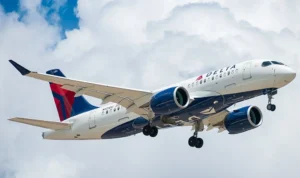
America First at the Border: U.S. Action Against Mexico Signals Pressure on Cross-Border Trucking
America First at the Border: U.S. Action Against Mexico Signals Pressure on Cross-Border Trucking
The cancellation of 13 Mexican airline routes has raised concerns that U.S. regulators may soon tighten oversight in cross-border trucking, reshaping the logistics landscape between both countries.

Top 10 key issues in the trucking industry for 2025
The American Transportation Research Institute released its annual report on the key issues facing the trucking industry. On October 26, the American Transportation Research Institute
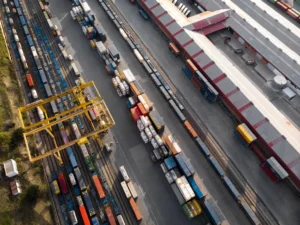
North American cross-border freight declines 2.5% in August 2025
A report published by the Bureau of Transportation Statistics, reveals that North American cross-border freight transportation recorded an estimated decrease of 2.5%. A report from
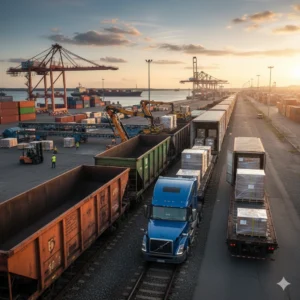
New Tariffs to Strengthen U.S. Truck Manufacturing on November 1
Starting November 1, the U.S. will impose new import tariffs on medium- and heavy-duty trucks and parts, a move designed to strengthen U.S. truck manufacturing, rebuild domestic supply chains, and reduce reliance on foreign-built models across the commercial trucking sector.
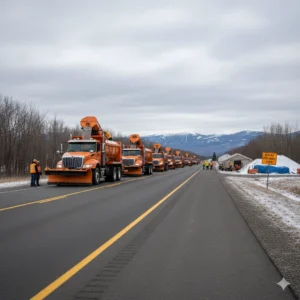
Winter Road Prep: How U.S. Highways Are Getting Ready for Snow, Ice and Heavy Truck Traffic
Winter Road Prep 2025 is already underway across multiple U.S. states, as transportation agencies begin reinforcing highways for snow, ice and heavy truck traffic to ensure safer conditions for commercial drivers during the peak freight season.
